Public Filming: Minneapolis and North Yorkshire #3
by TIM HICKS
~~~~~
Introduction
In my article “Minneapolis and North Yorkshire” I covered the impact of the death of Mr George Floyd in Minneapolis on policing in North Yorkshire. I stated
There are three main issues for policing in the UK arising from this footage:
- Policing by consent at a time of civil unrest arising from events that are external to the UK.
- UK Police policy on use of chokeholds.
- UK Police policy on filming in public and evidence collected by citizen journalists.
The first topic is beyond the scope of the NYE, but I covered application of choke holds in the UK in this article: “Minneapolis and North Yorkshire: [REDUX]”.
UK Police policy on use of choke holds: A follow-up.
The key conclusion from the article was that use of choke holds was prohibited unless there was a serious threat to life. The College of Policing confirmed that:
“Regarding your query about choke holds, the national personal safety training for officers in England and Wales does not contain any choke holds or restraint technique where officers apply pressure to the throat or neck area of a person. Officers are actively discouraged from this, due to the inherent dangers of putting pressure on the neck or throat, particularly during restraint.”
North Yorkshire Police confirmed:
“North Yorkshire Police do not train our officers and staff in the use of ‘chokeholds’ as part of Officer Safety Training. It is not an approved technique.”
I was very happy to report this, because it meant that the events leading to the death of Mr Floyd could not happen in the UK, where choke holds – and, in particular, neck restraints – could not normally be applied. I believe this information will be reassuring to the public.
I also expressed the personal opinion that following the death of Mr Floyd and given the above guidance, it would be impossible for a police officer in the UK to justify, in court, using a choke hold, unless it was clear that here was a very real threat to life.
Then this video surfaced of a man being arrested in Brighton by officers of Sussex Police on the 7th of July: Video here which allegedly shows an officer applying a restraint to a man’s neck.
This has caused outrage and the incident has been referred to the Independent Office for Police Conduct (IOPC). Excellent article from the Brighton & Hove News containing a full statement by Sussex Police can be read here.
The fact that the incident has been instantly referred to the IOPC, would tend to confirm my opinion above that use of a choke hold is now unjustifiable in the UK. The video clip only covers a part of the incident and I have been unable to ascertain enough information to comment meaningfully. So I will not comment further. I will report back in due course when the outcome of the IOPC investigation is known.
Turning to the main topic of this article
UK Police policy on filming in public.
The technology available to ordinary members of the public through their cell phones, coupled with the ability to upload footage onto the internet, means that the public will have more and more interaction with the police as a result of filming.
Prior to the existence of the College of Policing, policy was set by the Association of Chief Police Officers (ACPO). Chief Constable Andy Trotter, Chair of the former ACPO Communications Advisory Group, recognised this trend in his ground breaking ACPO Guidance on this area:
The rapid pace of technological change continues to bring new challenges, around the clock, for both media departments in police forces and the media. How the media report has changed dramatically over recent years – mobile phone footage, citizen journalists and social media such as twitter are all immediate, direct communication which sit outside the traditional broadcast and print arenas. They have become part of the mainstream.”
Five areas of challenge/change for the police and the public are as follows:
1) Provision of evidence to police investigations
The widespread use of dash cam, CCTV, mobile ‘phone footage and body cam by members of the public has given a valuable source of evidence for the police. Commendably, the police have been quick to exploit this source of information with appeals for footage.
This has led to people volunteering evidence to the police that is unconnected to police appeals for information. As an example, see this video clip from YouTuber “Cycling Mikey” here. “Cycling Mikey” regularly films drivers using their mobile ‘phones while driving and uploads them to the Metropolitan Police, resulting inevitably in them being prosecuted. The driver in this case pleaded guilty, had 6 penalty points, a £333 fine, with £133 in costs.
In this video, “Cycling Mikey” is involved in a confrontation with a driver (warning bad language) here.
Is it right or in the public interest for people to use filming to provoke confrontations in this way, while gathering evidence for the police?
2) “Citizen Journalism”
“Citizen journalism is based upon public citizens playing an active role in the process of collecting, reporting, analyzing, and disseminating news and information.”
Source: Wikipedia
The events surrounding the death of Mr Floyd in Minneapolis only became widely known because a member of the public acting as a citizen journalist took video footage of his arrest and death with his smart ‘phone and then uploaded it.
The footage of the arrest in Brighton above is a classic example of a citizen using his mobile ‘phone to document police conduct that caused him concern.
Last week, the footage below concerning the arrest of an adult male in a public place in Scarborough by three police officers was forwarded to the NYE by a person concerned that the police had used excessive force to arrest him.
I have been unable to ascertain any more information about the full sequence of events prior to the video clip, so other than to say that this is the first time the NYE has had video of the police sent to it, I will not comment further.
The key point of the Sussex and Scarborough video clips above is that following the events in Minneapolis, members of the public are now much more likely to film the police, acting as citizen journalists.
Local media outlets in the UK are undergoing rapid change with many long standing local titles closing, because of (amongst other things) competition from Internet Community News Magazines like the NYE. In the future online forums will be more prominent media outlets than they are at present and the police will increasingly come into contact with members of the public acting as citizen journalists taking footage and uploading it to online news magazines. The above film from Scarborough passed to the NYE is a classic example of this.
3) Photography Is Not a Crime (PINAC)/Public Photography Audits
Another development in the issue of public filming of police is the emergence of Public Photography Auditors in the UK. This activity has emerged from the First Amendment Auditors movement in the United States. These people take photographs or film in a public place of sensitive areas such as police stations, prisons, defence establishments, etc., to see if they get a reaction from the police, or if their right to film in public is respected.
I believe that unfortunately this type of lawful but provocative photography will become more prevalent and will result in more confrontations between the police and photographers. This video shows such an encounter between the police and a man filming the car park of a police station. This resulted in an Inspector from West Yorkshire Police being the subject of a private prosecution under Section 6 of the Prosecution of Offences Act 1985. The prosecution was discontinued when the CPS took the case over and then declined to offer any evidence. He subsequently received ‘advice’ following a misconduct hearing.
4) Provision of footage to mainstream media
Some media organisations actively ask members of the public to upload pictures and their footage to them, to source stories. Members of the public undertaking this activity are arguably acting as agents of mainstream media. Could they therefore be entitled to the same protection as journalists?
5) Use of photography at tourist sites for Close Target Reconnaissance by terrorists
Earlier this month, Ms Safiyya Shaikh, who was a radicalised Muslim convert and a supporter of ISIL was sentenced to life imprisonment for trying to plant a bomb in St Paul’s Cathedral. After bombing St Paul’s she intended to go to a London Underground station and conduct a suicide bombing there.

St Paul’s Cathedral Bomber Safiyya Shaikh
As part of this plot, she visited St Paul’s to conduct Close Target Reconnaissance (CTR) to identify hiding places to conceal the bomb and took a photograph to show a contact who she thought was also an ISIL terrorist where she would plant the bomb. Fortunately this contact was an undercover police officer and the plot was foiled.
BBC report here
This has major implications for filming and photography in public, because it is an example of a terrorist using photography as part of CTR at a tourist attraction.
Section 43 of the Terrorism Act 2000 empowers Police Officers to stop and search a person who they reasonably suspect to be a terrorist under, to discover whether that person has in their possession anything which may constitute evidence that they are a terrorist. They can also view digital images contained in mobile telephones or cameras carried by a person searched under S43 of the Terrorism Act 2000, to discover whether the images constitute evidence that the person is involved in terrorism. They can then seize and retain any article found during the search which the officer reasonably suspects may constitute evidence that the person is a terrorist, including any mobile telephone or camera containing such evidence.
As a result of the attempt to bomb St Paul’s Cathedral, police officers at tourist sites e.g. York Minster will now have reasonable grounds to suspect that anyone taking a photograph is a terrorist conducting CTR. This will inevitably result in more innocent people being stopped, searched and questioned under the Terrorism Act 2000, and having their cameras and mobile ‘phones seized.
Unfortunately some police officers have exceeded their powers and used the Terrorism Act as a pretext to prevent members of the public filming. These video clips here, here and here show some examples of this.
North Yorkshire Police policy on public filming.
The Metropolitan Police force policy on police powers and photography is here. It is a very good summary of the law on public filming and well worth reading if you are a police officer, journalist or someone that videos and/or photographs in public.
Because the Met covers the capital, which has a greater representation of journalists and photographers and is also a tourism centre, Metropolitan Police Officers come into contact with these issues more often. Hence the reason it has a comprehensive force policy. However many county forces do not have any policy on public photography, even though these issues are now much more relevant to policing everywhere.
I wrote to Chief Constable Winward asking her to confirm what North Yorkshire Police force policy was and if it had a similar policy to the Metropolitan Police. Her response was clear and helpful:
North Yorkshire Police do not have a written policy or guidance on photography, similar to the one you have shared from the Metropolitan Police. However we do follow the College of Policing’s Authorised Professional Practice which can be found at https://www.app.college.police.uk/app-content/engagement-and-communication/media-relations/ which touches on similar issues.
The relevant guidance from the College of Policing Media APP that Chief Constable Winward referred to is contained in the extract below:
“Reporting from a scene
Reporting or filming from the scene of an incident is part of the media’s role and they should not be prevented from doing so from a public place. Police have no power or moral responsibility to stop the filming or photographing of incidents or police personnel. It is for the media to determine what is published or broadcast, not the police. Once an image has been recorded, the police have no power to seize equipment, or delete or confiscate images or footage without a court order.
Where police have designated a cordoned area, the media must respect it in the same way as the public, unless a media facility within a cordoned area has been authorised by police. The best possible vantage point for media should be considered, providing it does not compromise operational needs.”
The College of Policing Media APP is primarily intended to provide advice for force corporate communications departments on media relations with traditional media. It refers to photography by members of the traditional print and broadcast media, but does not cover members of the public that are legitimately filming in public. Any NYP Constable who consulted the APP would I believe conclude that only members of the media were entitled to film them.
The lack of any guidance on filming by members of the public either for their own purposes, or citizen and community journalism in the College of Policing APP, leaves Police Officers from North Yorkshire Police with no guidance on this issue. This is regrettable because unfortunate and unnecessary confrontations between police officers and members of the public, who are legitimately filming for their own use or upload to internet online forums, or the mainstream media will damage community relations with the police. Particularly as police officers from the County forces will have a much higher exposure to these issues going forward.
As one of the UK’s first and leading Internet Community News Magazines, the NYE has been in the forefront of trying to generate reform of this area of policing, by raising the issue of public filming/citizen journalism with the NUJ and the College of Policing.
I have asked Chief Constable Winward to consider adopting a force policy similar to the Metropolitan Police model and will report back in due course when I receive her response.


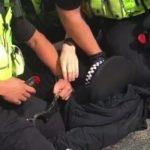
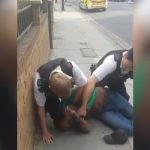
![Minneapolis and North Yorkshire [REDUX]](http://nyenquirer.uk/wp-content/uploads/2020/07/ARREST-150x150.jpg)
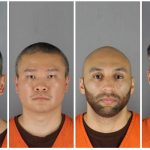
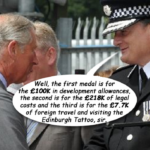
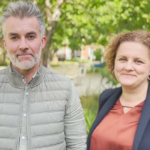
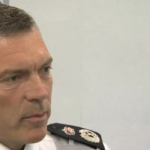


















Comments are closed.